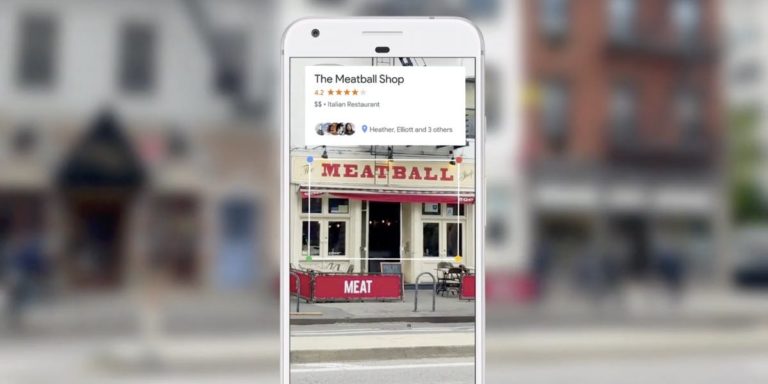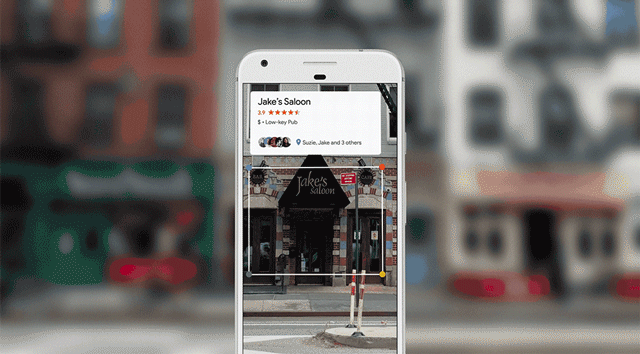
This entry was adapted from an article in Street Fight that was contributed by ARtillry and written by this post’s author.
After spending lots of time in the AR world, one factor continues to be overlooked: local data. Though it’s the unsexy part of the discussion, geo-relevant data will play a critical part in the graphical overlays that are core to AR’s vision.
Google’s visual positioning service (VPS) is one example. Walking around Home Depot and being guided to the exact screwdriver you’re looking for requires an accurate database of products, blueprints and 3d scans of hundreds of store locations.
Google Lens is another example. Holding a phone up to a storefront to get real-time details, reviews and operating hours is accomplished through object recognition using Street View imagery, as well as lots of Google’s local business data.
This is all to say that the visual search future in which “the camera is the new search box,” will have a massive reliance on local data. Therefore value and demand are boosted within that world for anyone that has unique local data — everything from NAP to snaps.
Speaking of Snap, it has validated this principle through two recent acquisitions that support a location data play: Placed and Zenly. These moves follow geo-filters in Snapchat’s march towards more local relevance for shared snaps, and AR content like World Lenses.
Another local example (though non-AR) is Uber’s move to capture and monetize your in-car attention. That will unlock lots of additive media time. Serving behavioral and route-informed suggestions for local fare comes next; and data partners like Foursquare will enable it.
Supporting this, the Economist recently wrote that data is the new oil. That works on metaphoric levels regarding economic impact. But it also applies literally: companies built on data — Google, Amazon, Facebook — have valuations approaching the ExxonMobils of the world.
Back to AR, the sector has some big technical challenges so it can be forgiven for not thinking about local data just yet. But it will eventually realize that differentiation stems from a fundamental ability to locate objects — not bells and whistles — which in turn stems from local data.
Of course data isn’t as sexy as the AR-rendered dragon that flies across your living room (or more aptly, the “barmaid” from Silicon Valley). But it’ll be a primary source of differentiation and thus value in immersive tech. And the dollars it creates could arguably have some sex appeal.

